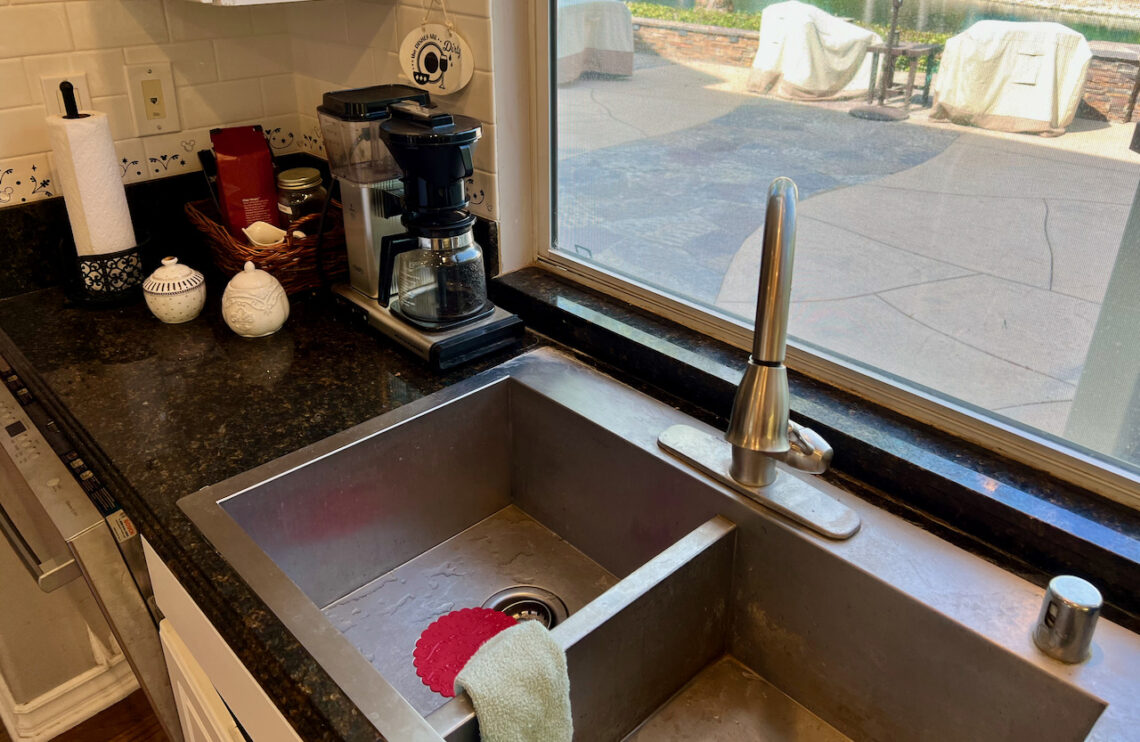
Change the Environment: How a $6 “Red Thing” Solved a Big Problem in the Kitchen
“Not again,” I sighed as I walked up to the kitchen sink and saw the lunch dishes piled up. I must have forgotten to change over the “Clean or Dirty” sign hanging near the sink.
Nope, it read dirty.
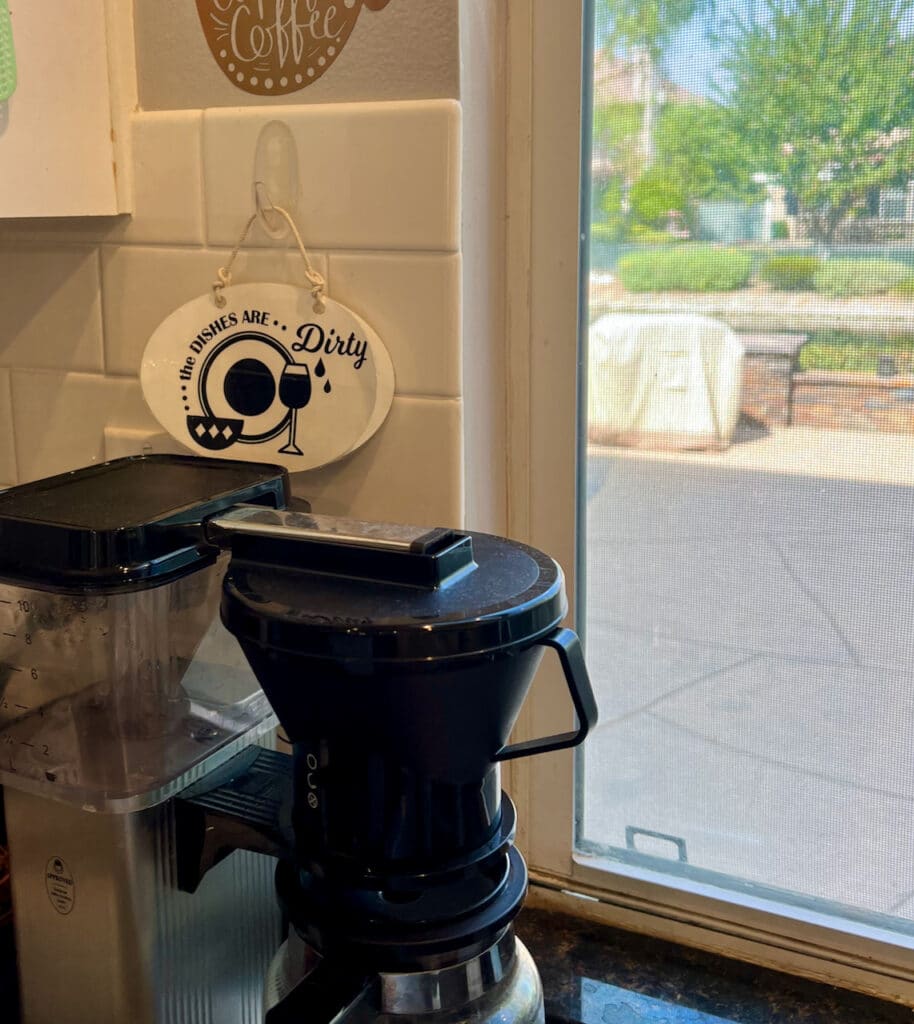
Maybe the dishwasher was full?
I opened up the dishwasher, and there was plenty of room inside.
Grr.
I had a few choices in front of me. I could silently put the dishes inside the dishwasher and not say anything to the family. I’ve done that in the past.
Instead, I decided to bring light to the issue.
From Family Conversation to Argument
I sent the following text to our family group chat.
“I would really love it if dishes went in the dishwasher when there’s room for them, thank you :-)”
I could hear the stomping and grumbling as Dave and Dan made their way down the stairs.
Confused at the noise and frustration, I asked why they hadn’t checked the dish sign.
Here’s what they said:
- It’s not obvious
- Sometimes it is wrong
- If there’s a dish in the sink, that means I can put mine in there
- It is too pretty and blends into everything else in the kitchen
- I forget to look
These all sounded like (lame) excuses to me. I was sure that they just wanted to make more work for me. So instead of listening to their reasons, I decided to press back with:
- It is right there. How can you miss it?
- Do you want to make more work for me?
- I’ve already moved the sign once; how much more obvious can I make it?
- I guess you just don’t care?
That last retort of mine was the icing on the cake. After that, the “discussion” morphed into a full-on family argument. We spent nearly a half an hour going back and forth about how we were all justified in our frustration.
This was not how any of us wanted to spend the Saturday afternoon.
I was convinced that my way was the right way, and if I said it enough times, they would come around to my side.
Reason Prevails : Change the Environment
“Do you want to solve the problem or keep fighting?” Dave asked. “If you want different behavior, the environment needs to change.”
“Really, what more am I supposed to do? There’s already a sign.” I was not going to give this up without an argument.
“I need something in the sink because that’s where I’m looking when I put the dishes there,” Dave said.“What am I supposed to put in the sink?” I responded, still frustrated. “Most of the signs are designed to go on the dishwasher or the wall.”
I started doing an Amazon search during the argument for dishwasher signs. None of them were designed to go in the sink, and worse, the best ones were red on one side and green on the other. That wouldn’t work for my color-blind son. I was frustrated.
Suddenly my messages binged with a message from Dave. He was searching too.
“What about this?” He sent me a link to a circular, silicone, red jar opener. “It even has swirls on it, so it will look nice.”
Would something so simple and affordable really solve our problem? I didn’t spend too much time thinking about it. It was $6. Would it work?
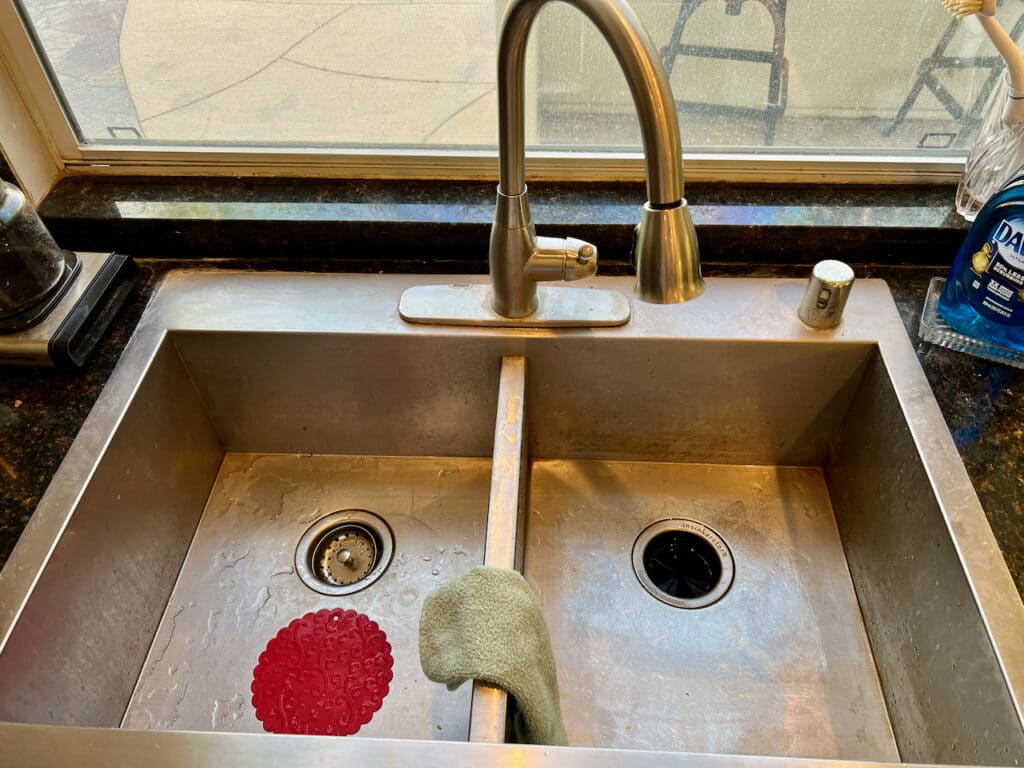
The “red thing” arrived a few days later, and I quickly put it in the sink.
Two Weeks Later- “The Red Thing” Reviewed
It is nothing short of a miracle. No one, including me, dares to be the one who puts a dish on top of the red thing! I will empty the dishwasher in the morning, and then to my great surprise, when I get to dinner prep time, there are no dishes in the sink.
When it is time to run the dishwasher, I pick it up and put it in the coffee basket so that everyone knows the sink is available for the dishes.
Changing the Environment for Success
As much as I wanted to believe that my cute sign was the best way to solve the dishes in the sink, I was wrong. Changing the environment to promote success was ultimately what was necessary.
I had designed a solution for dishes that worked for me. But, unfortunately, it wasn’t working for the family members I wanted to influence. Getting mad at them and constantly reminding them wasn’t enough. They genuinely wanted to contribute to the home, but the environment wasn’t conducive to their success.
We needed a red thing.
Did I Want to be “Right” or Solve the Problem?
This is a tricky question for me to answer. I really like being right. Unfortunately, that means that I can focus on how my right method is the one that will work best for everyone in the home. Continuing to use a sign that didn’t work for my family was me holding on to my “right way.” The result was a sink full of dishes.
I needed to listen to my family. They weren’t stacking dishes in the sink because they hated me or were lazy. The problem was that the solution I had designed didn’t work for the audience I needed it to work for.
The dishwasher sign was never for me. I always knew whether the dishes were clean or dirty because I ran and emptied it.
The sign was for my family, and it wasn’t working.
Rather than ask the clarifying questions of my family, I made assumptions about their intentions. This didn’t help the relationships. I was irritated about the dishes in the sink, and they were frustrated that they had failed again.
Lasting change is only possible when the environment sets everyone up for success. We needed a solution for everyone.
We needed a red thing.
Change the environment, change the behavior.
A bright red rubber circle in the sink is really obvious. Red communicates stop, and that is precisely what we are all doing. We stop before we put the dishes in the sink.
It is all too easy to get frustrated when our solutions don’t work. Maybe we need to stop and think about whether the system we have designed is working for the users.
A Vacation “Red Thing”
Recently we went to Club Med Punta Cana for our summer vacation. The company has designed a variety of health and safety systems to align with the Covid 19 pandemic. One of them is that guests (GMs) are expected to sanitize their hands and wear masks when inside the restaurants getting their food.
But, not everyone was doing that, and the resort realized something needed to change.
We had an opportunity to talk with the chef de village during our stay, and he shared how he had changed the environment to ensure success.
One GO (that is what Club Med calls their employees) was assigned to be the restaurant greeter. They would say hello to everyone, hand a mask to those who didn’t have one, and also have a bottle of sanitizer in their hands. In a friendly and welcoming manner, they would sanitize everyone’s hands as they entered the restaurant. It was impossible to enter without a conversation and a spritz of sanitizer.
A simple change meant that everyone entered the restaurant with a mask and clean hands.
Placing a GO at the door was their “red thing.”
Changing the environment led to greater success. For example, they could have decided to put up more prominent signs or have a “mask compliance GO” walking around. But instead, they decided to welcome us with a friendly greeting, provide masks, and offer sanitizer to us as we walked in.
Changing the environment works.
Red Thing: Make An Obvious Change
Many years ago, Dave read a book called “Change or Die” that was influential in his weight loss success. One of the keys to change is to make sure that the environment is supporting the desired behavior. I don’t keep sweets that I know Dave loves in the house for that very reason. Keeping the environment healthy allows him to continue to make good food choices.
Putting the red thing in the sink is enough of an environment change to modify the behavior. All of the breakfast and lunch dishes are now making their way into the dishwasher. It is amazing!
What is Your “Red Thing?”
- Do you have a pesky problem in your life that needs a red thing?
- What isn’t working right now?
- Can you change the environment to make it better?
We all need a “red thing” to make change stick. What will yours be?
Jennifer Douglas
Jennifer Douglas is an author, patient advocate, and DCIS breast cancer survivor. After navigating her own breast cancer journey in 2019, she began writing and encouraging others who were newly diagnosed. Her resources include her book, "A Breast Cancer Journey: Living It One Step at a Time," and her online support course, "Encourage: Breast Cancer and Beyond." Jennifer also actively supports patients through her online presence and direct involvement in communities and support groups, offering guidance and encouragement every step of the way.

You May Also Like

Family Expertise: Who Does What in the Home?
April 6, 2021
Ask For Help When You Need It!
September 15, 2020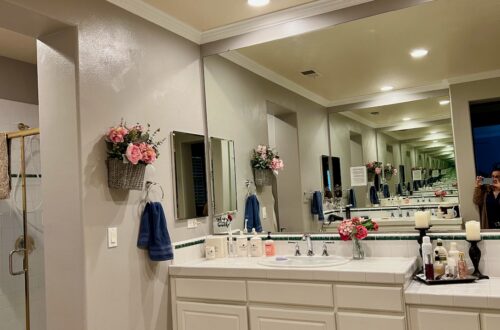
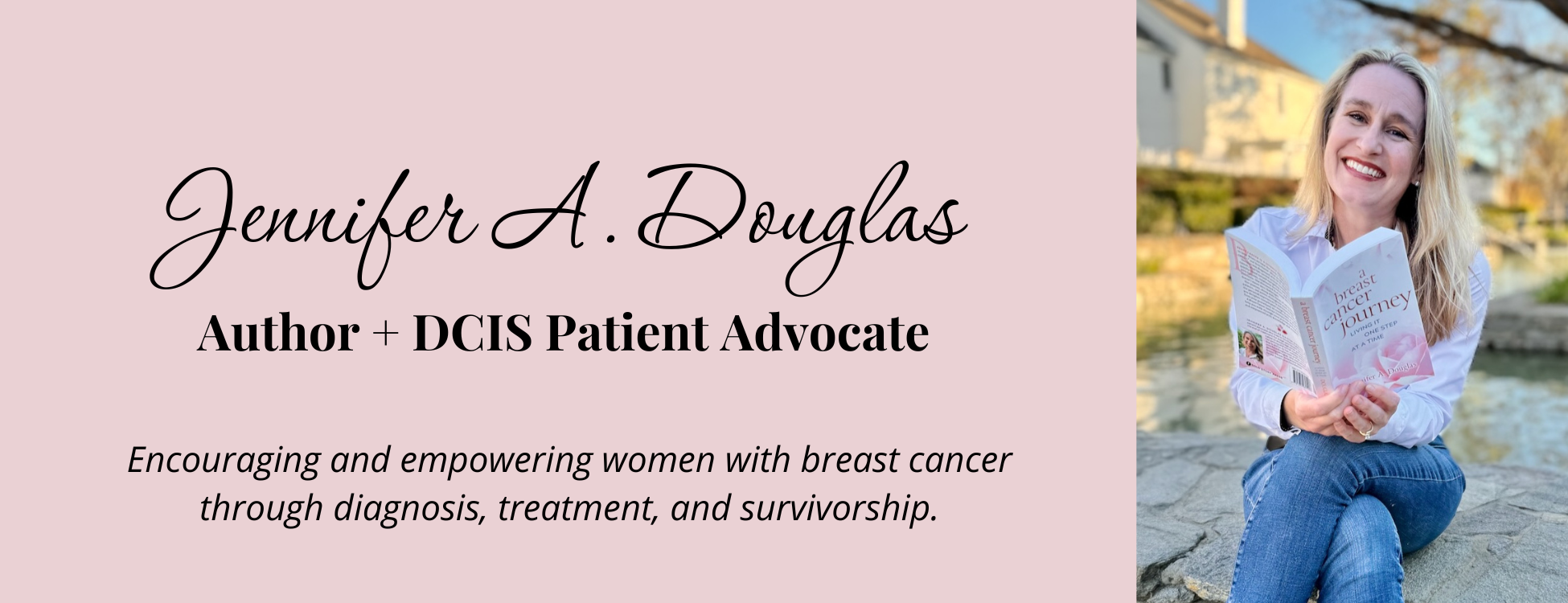
One Comment
Pingback: